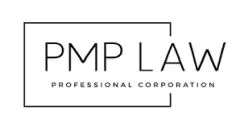- in Canada
If you're involved in a personal injury lawsuit in Ontario, one of the key steps in the litigation process is the examination for discovery. This critical stage can feel intimidating, especially if you're unfamiliar with the legal system. At PMP Law, we're committed to guiding our clients through every step of their case with clarity and confidence. In this blog post, we'll explain what an examination for discovery entails, what you can expect, and how to prepare for this important phase in your personal injury case.
What Is an Examination for Discovery?
An examination for discovery is a pre-trial procedure in Ontario where all parties in a lawsuit have the opportunity to question each other under oath. The purpose is to gather information, clarify the facts of the case, and assess the strengths and weaknesses of each side's position. In a personal injury case, this typically involves the plaintiff (the injured party) and the defendant (the party being sued, such as an at-fault driver or property owner) answering questions posed by opposing counsel.
Discoveries are conducted outside of court, usually in a boardroom setting at a court reporting office or Zoom, and the proceedings are recorded by a court reporter. The transcript of the examination may later be used in court or during settlement negotiations.
Why Is the Examination for Discovery Important?
The examination for discovery serves several key purposes in a personal injury case:
Fact-Finding: It allows both sides to obtain a clear understanding of the facts, including details about the incident, injuries, and damages.
Evidence Gathering: The information provided during discoveries helps each party build their case by identifying relevant documents, witnesses, and arguments.
Assessing Credibility: Lawyers evaluate how you present your story and whether your testimony is consistent, which can influence settlement discussions or trial strategies.
Narrowing Issues: Discoveries help identify areas of agreement and disagreement, potentially reducing the scope of issues to be resolved at trial.
Encouraging Settlement: By revealing the strengths and weaknesses of each side's case, discoveries often pave the way for settlement negotiations, as both parties gain a clearer picture of the risks of proceeding to trial.
What Happens During an Examination for Discovery?
In a personal injury case, the examination for discovery typically involves two parts: the plaintiff's discovery and the defendant's discovery. Here's what you can expect:
Setting and Format
The discovery takes place in a professional but informal setting, such as a conference room.
Present will be you (the plaintiff), your lawyer, the defendant's lawyer, and a court reporter. The defendant may also be present or questioned separately.
Questions are asked orally, and your answers are given under oath, meaning you are legally obligated to tell the truth.
Types of Questions
The defendant's lawyer will ask you a wide range of questions to gather information about your case. Common topics in a personal injury examination for discovery include:
Background Information: Your personal history, education, employment, and lifestyle before the accident.
The Incident: Detailed questions about how the accident occurred, including the events leading up to it and your recollection of the scene.
Injuries and Treatment: The nature and extent of your injuries, medical treatments received, and ongoing symptoms or limitations.
Impact on Your Life: How the injuries have affected your ability to work, perform daily activities, or enjoy hobbies.
Damages Claimed: Questions about lost income, medical expenses, and other financial losses you're seeking compensation for.
Prior Health History: Any pre-existing medical conditions or injuries that may be relevant to your claim.
Your Role
As the plaintiff, your role is to answer questions truthfully and to the best of your ability. However, you're not expected to memorize every detail or speculate about things you don't know. Your lawyer will be present to guide you, object to improper questions, and ensure the process remains fair.
Duration
The length of an examination for discovery varies depending on the complexity of the case. In straightforward personal injury cases, it may last a few hours. More complex cases involving severe injuries or multiple parties could take a full day or longer.
How to Prepare for Your Examination for Discovery
Proper preparation is key to approaching your examination for discovery with confidence. Here are some tips to help you get ready:
Meet with Your Lawyer: Your lawyer will schedule a preparation session to review the process, discuss potential questions, and help you understand what to expect. They'll also review key documents, such as medical records, accident reports, and your statement of claim.
Review the Facts: Refresh your memory about the details of the accident and your injuries. Review any notes, photos, or documents related to the incident to ensure your recollection is accurate.
Be Honest and Consistent: Always tell the truth, as inconsistencies between your discovery testimony and other evidence could harm your case. If you're unsure about a detail, it's okay to say, "I don't recall" or "I don't know."
Practice Clear Communication: Answer questions directly and concisely. Avoid volunteering extra information beyond what's asked, as this could open the door to further questioning.
Stay Calm and Composed: The opposing lawyer may ask tough or repetitive questions to test your credibility or patience. Stay calm, take your time to think before answering, and don't let frustration show.
Understand Undertakings: During the discovery, your lawyer may agree to provide additional documents or information ("undertakings"). This is a normal part of the process, and your lawyer will explain any follow-up steps.
Common Pitfalls to Avoid
While the examination for discovery is a routine part of litigation, there are some common mistakes to watch out for:
Exaggerating Injuries: Overstating the severity of your injuries or their impact can undermine your credibility if medical evidence doesn't support your claims.
Guessing or Speculating: If you don't know the answer to a question, say so rather than guessing, as your answers are binding.
Arguing with Counsel: Avoid getting defensive or arguing with the opposing lawyer. Let your lawyer handle any disputes or objections.
Discussing Privileged Information: Don't share details about conversations with your lawyer, as these are protected by solicitor-client privilege.
What Happens After the Examination for Discovery?
Once the examination for discovery is complete, several things may happen:
Follow-Up Undertakings: Your lawyer may need to provide documents or answers to questions raised during the discovery.
Settlement Discussions: The information gathered often leads to settlement talks, as both sides have a clearer understanding of the case's strengths and weaknesses.
Further Discoveries: In some cases, additional examinations may be required if new issues arise or more parties are involved.
Trial Preparation: If the case doesn't settle, the discovery transcript will be used to prepare for trial, where it may be referenced to challenge inconsistencies or support arguments.
The content of this article is intended to provide a general guide to the subject matter. Specialist advice should be sought about your specific circumstances.
[View Source]

